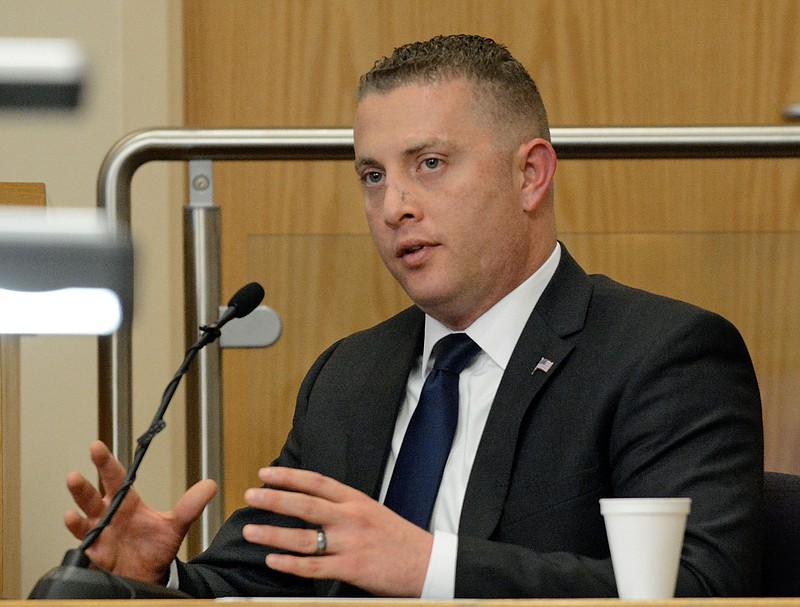ALBUQUERQUE, N.M. (AP) - A homeless camper with knives in his pockets pulled out the blades and took an "aggressive fighting stance" in the seconds before two Albuquerque police officers fatally shot the man, one of the officers testified Tuesday.
Ex-Officer Dominique Perez's testimony during the third week of the jury trial for him and now-retired Detective Keith Sandy marked the first time either officer has spoken publicly since the 2014 shooting that led to unrest in New Mexico's largest city. Both are charged with second-degree murder in the death of James Boyd, who suffered from mental illness and was camping illegally in the Sandia Mountain foothills.
The encounter began when a resident reported Boyd's unlawful presence to the authorities. The two officers who responded called for help after Boyd pulled knives out of his pockets. Nearly 20 officers responded to the scene with rifles, handguns, hundreds of rounds of ammunition, and a Taser shotgun.
Perez was among the last officers to arrive at the hourslong encounter. He opened fire with a rifle seconds after another officer detonated a flash-bang grenade, sending the standoff into chaos. The bang was supposed to startle Boyd so officers could take him into custody, but it didn't work.
"All the things that occurred that day happened in the blink of an eye - happened at the speed of light," Perez said while questioned by his attorney.
The shooting, captured on video by Perez's helmet camera, sparked waves of protests in Albuquerque and led to calls from the city's mayor for the U.S. Justice Department to speed an investigation into accusations of excessive force by local officers. That investigation later found a "culture of aggression" within the Albuquerque Police Department and set the stage for a settlement agreement to overhaul how the nearly 900-member police force trains officers to deal with the mentally ill and people in crisis.
Police video of Boyd's March 16, 2014, standoff with police shows officers standing 20 to 30 feet away ordering him to surrender the two knives and walk down the hillside with them.
In short bursts of outrage, Boyd yells death threats at officers in the video. At other points, he talks about opening a donut shop and going to a Denny's restaurant, before appearing to prepare to surrender in the final minutes of the video.
As he is picking up his belongings and telling officers he'll walk down the mountain with them, however, the flash-bang grenade is detonated on a rock to Boyd's right, prompting him to pull his knives as a K-9 unit approaches him.
The officers' attorneys say they were obligated to shoot to protect a K-9 handler who had come within 10 feet of Boyd.
Special prosecutor Randi McGinn argues that a series of flawed decisions by police - from interrupting negotiations between Boyd and an officer trained in crisis intervention to rushing a plan to deploy less-lethal force - escalated the encounter and led to Boyd's shooting death.
